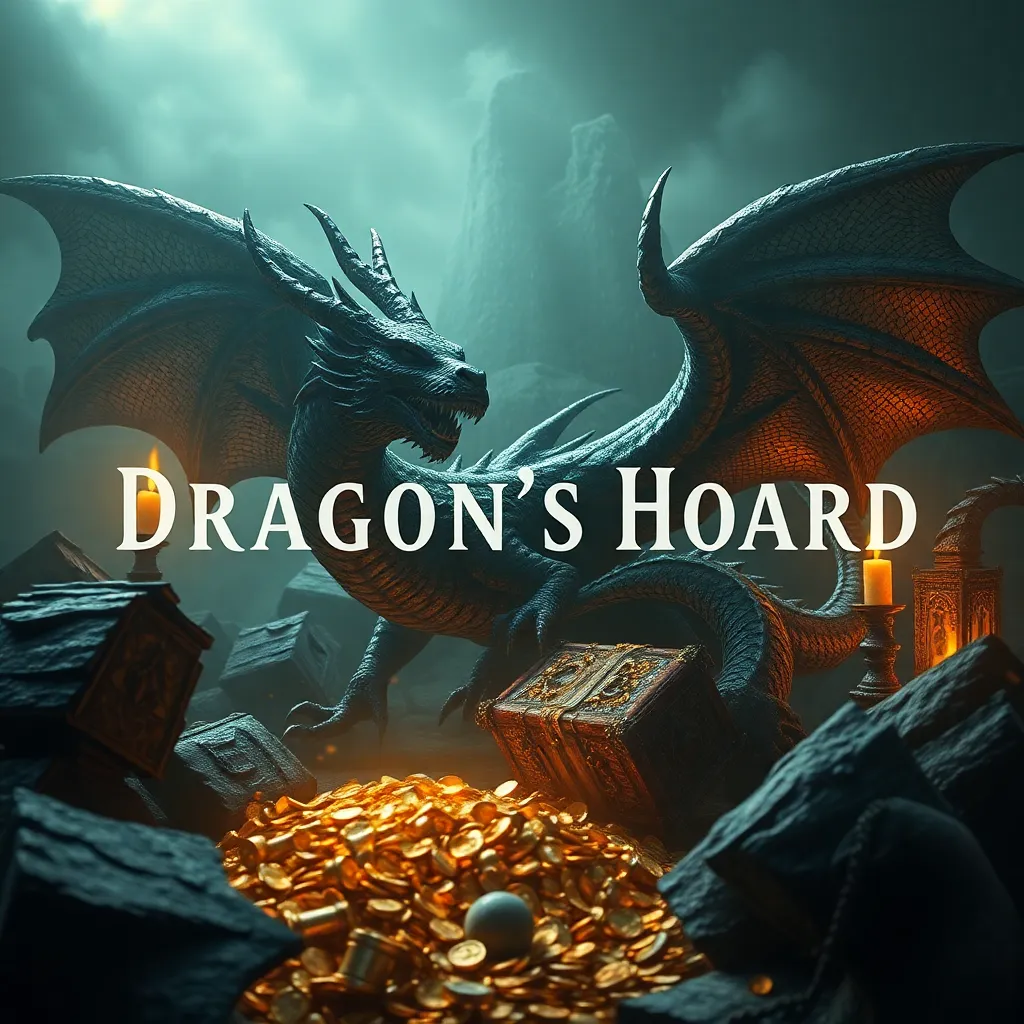The Dragon’s Hoard: Fafnir and the Mythology of Treasure
I. Introduction to Fafnir and His Significance in Norse Mythology
Fafnir is one of the most intriguing characters in Norse mythology, known for his transformation from a man into a fearsome dragon. As the son of the dwarf king Hreidmar, Fafnir’s story is a cautionary tale about the destructive nature of greed and the insatiable desire for wealth. Dragons, often depicted as guardians of treasure, hold significant cultural importance across various mythologies, symbolizing primal fears and the consequences of avarice.
The theme of treasure in myth is a powerful one, often intertwined with tales of heroes and the trials they face. Fafnir’s hoard serves not only as a physical representation of wealth but also as a catalyst for conflict and moral lessons about the nature of greed and its repercussions.
II. The Legend of Fafnir: From Man to Dragon
The transformation of Fafnir from a man into a dragon is a central element of his legend. Initially, Fafnir was a dwarf, but after acquiring a vast treasure, he became consumed by greed. This greed manifested physically as he morphed into a dragon, a creature that symbolizes both power and the corruption that comes from the insatiable desire for wealth.
Greed is a powerful force in Fafnir’s story, leading to tragic consequences for both him and those around him. His transformation represents the idea that the pursuit of wealth can dehumanize individuals, turning them into monstrous versions of themselves. In Norse storytelling, dragons often symbolize chaos and destruction, embodying the destructive nature of unchecked greed.
III. The Curse of the Rhinegold: The Source of Fafnir’s Wealth
The legendary Rhinegold plays a significant role in Fafnir’s tale. According to myth, the Rhinegold was a treasure forged from the Rhine River, cursed by its original owner, the dwarf Alberich. This curse dictated that anyone who possessed the gold would be doomed to experience suffering and betrayal.
Fafnir’s hoarding of this cursed wealth leads to his downfall. The gold, while initially a source of power and luxury, becomes a burden that ultimately corrupts him. This connection between the gold and Fafnir’s greedy nature serves as a reminder of the perilous nature of wealth and the inevitable consequences of hoarding.
IV. The Concept of Treasure in Norse Mythology
Treasures in Norse mythology are varied and can include:
- Gold and precious metals
- Magical artifacts
- Land and power
Treasures often symbolize power and corruption, representing the duality of wealth as both a means to achieve greatness and a source of downfall. In the tales of gods and heroes, treasure frequently leads to conflict, illustrating the moral implications of hoarding wealth. The stories serve as cautionary tales, emphasizing that the pursuit of material riches can have dire consequences.
V. The Heroic Quest: Sigurd and the Slaying of Fafnir
Sigurd, the legendary hero, is central to the tale of Fafnir. Motivated by the desire to claim the dragon’s hoard and prove his valor, Sigurd embarks on a perilous quest to slay Fafnir. His journey is fraught with challenges, including encounters with treachery and battles with other formidable foes.
The significance of Fafnir’s defeat lies not only in Sigurd’s triumph over the dragon but also in the moral lessons embedded in the story. Sigurd’s victory symbolizes the triumph of courage and honor over greed and corruption, showcasing the importance of bravery in the face of overwhelming odds.
VI. Themes of Greed and Betrayal in Fafnir’s Story
The tale of Fafnir is rich with themes of greed and betrayal. Greed is depicted as a corrosive force, leading to the destruction of relationships and the moral decay of individuals. Fafnir’s insatiable desire for wealth alienates him from his family and ultimately results in his tragic fate.
The relationships affected by Fafnir’s hoarding extend beyond his immediate family, influencing the interactions between gods and men. Betrayal becomes a recurring theme, as those who seek to acquire the treasure often resort to deceit and treachery, leading to a cycle of violence and retribution.
VII. The Legacy of Fafnir in Modern Culture
Fafnir’s influence extends beyond ancient texts, permeating literature and art throughout the ages. His character has inspired numerous adaptations in contemporary media, from novels to films, where dragons often symbolize the eternal struggle between greed and honor.
Modern interpretations of the Fafnir myth highlight the enduring fascination with dragons and treasure, serving as a metaphor for human desires and the moral dilemmas faced in the pursuit of wealth. The archetype of the dragon guarding a hoard continues to resonate, reflecting timeless themes of greed, power, and the consequences of our choices.
VIII. Conclusion: The Lesson of Fafnir’s Hoard
Fafnir’s story serves as a poignant reminder of the dangers of greed and the moral implications of hoarding wealth. As we reflect on his tragic tale, it becomes clear that the pursuit of treasure can lead to destruction, not only for the individual but also for those around them.
The broader implications of treasure in society mirror the struggles faced by individuals throughout history, emphasizing the delicate balance between ambition and moral integrity. Ultimately, Fafnir’s tale invites us to consider the intersection of myth and human nature, reminding us that the greatest treasures often lie not in material wealth but in the values we uphold in our lives.




